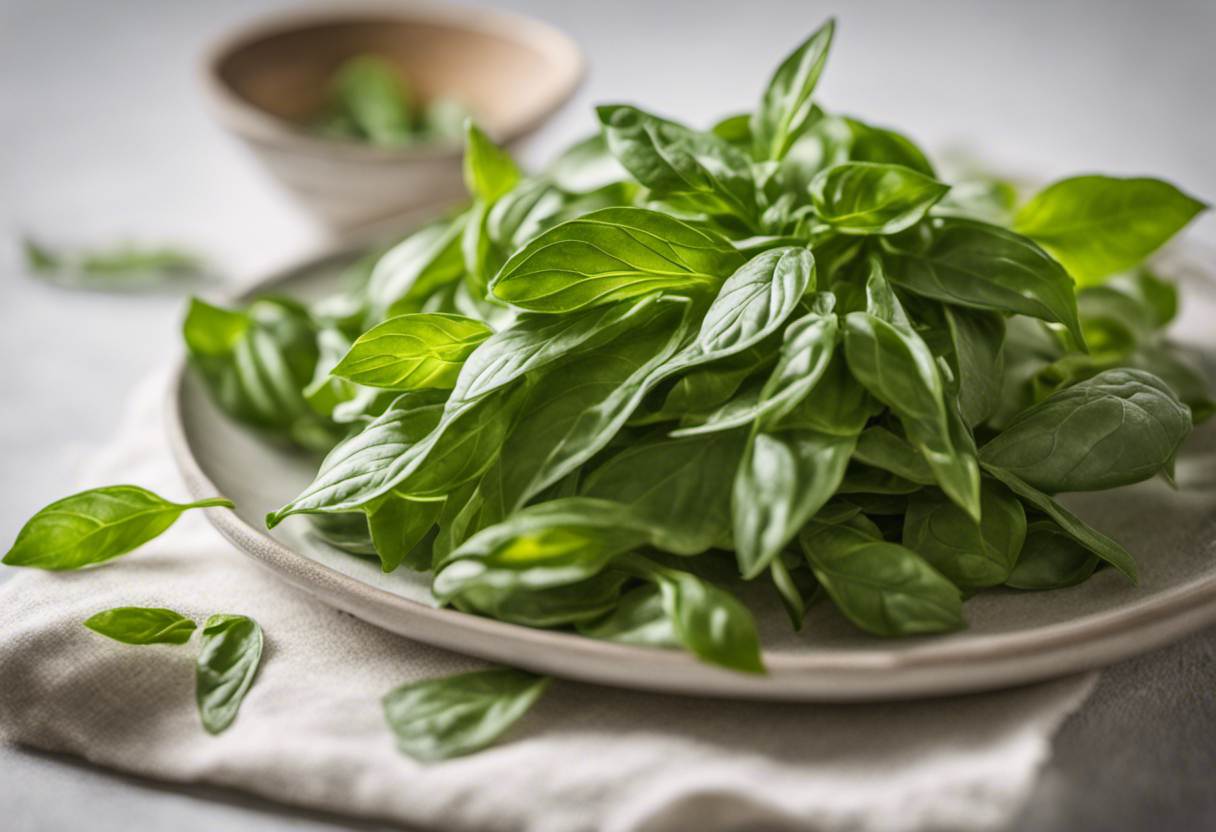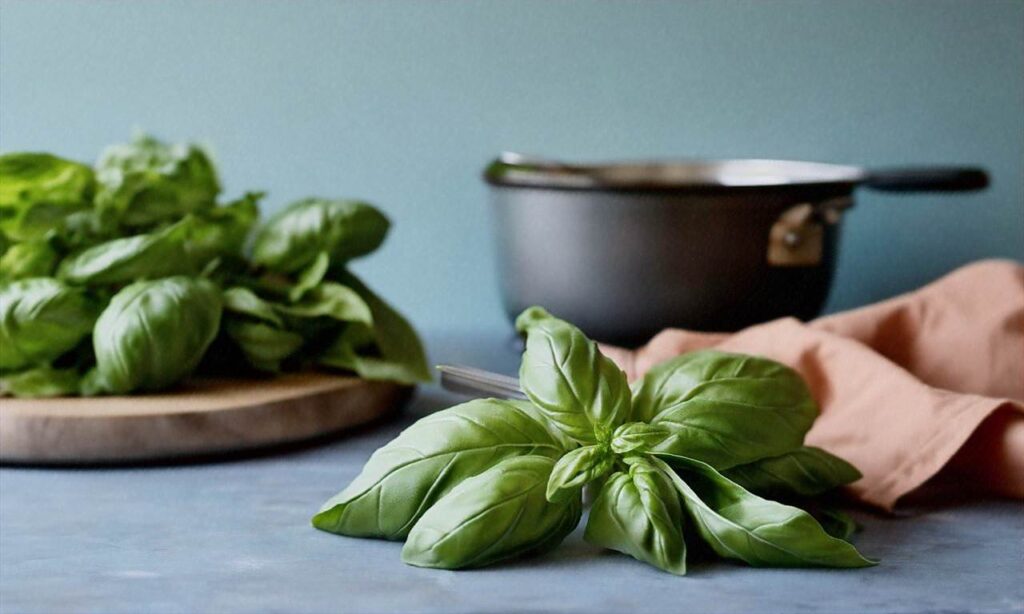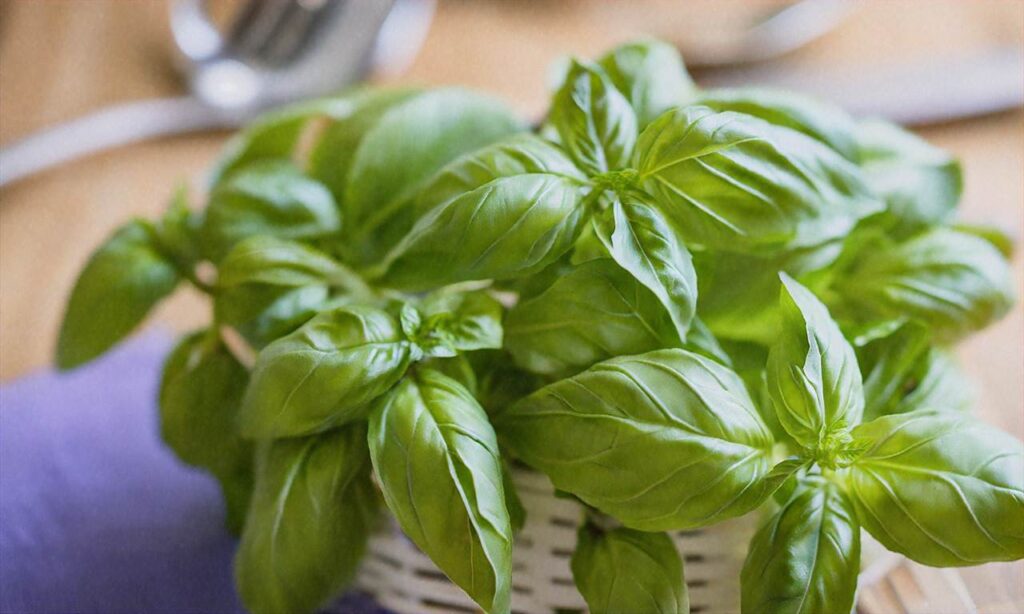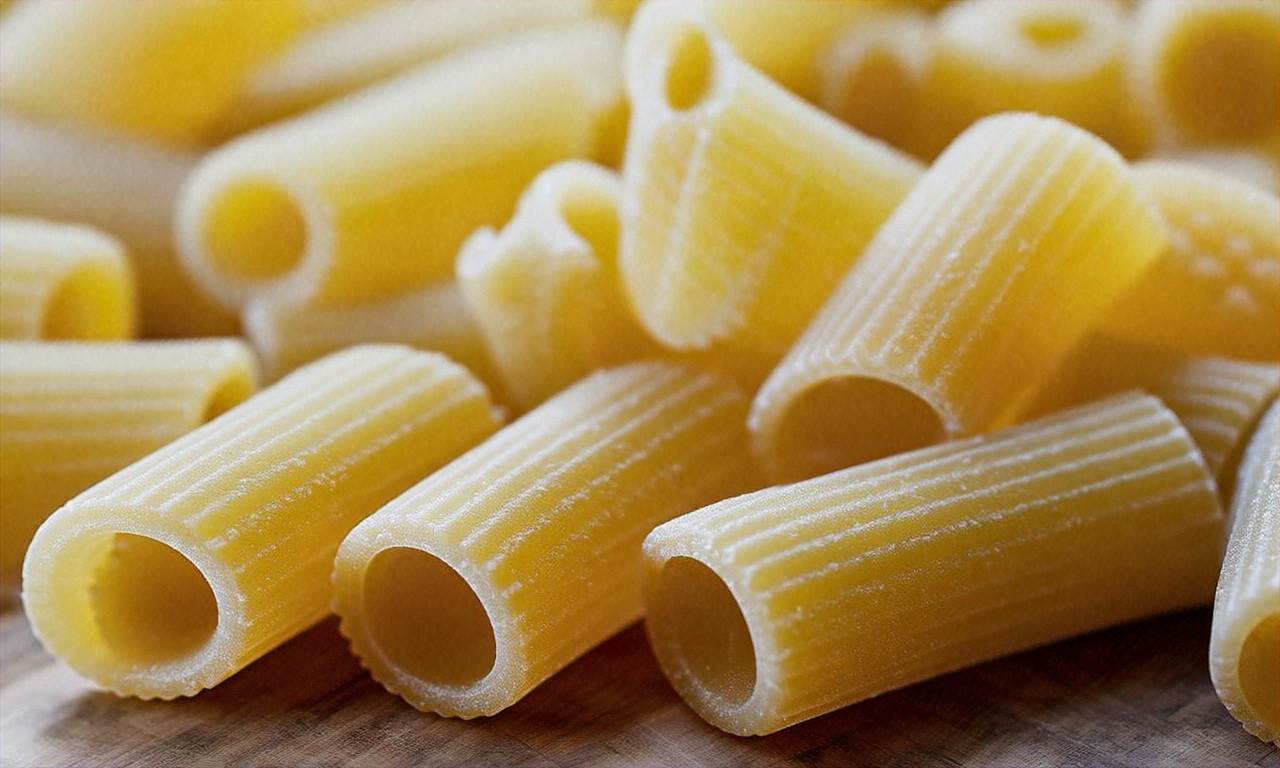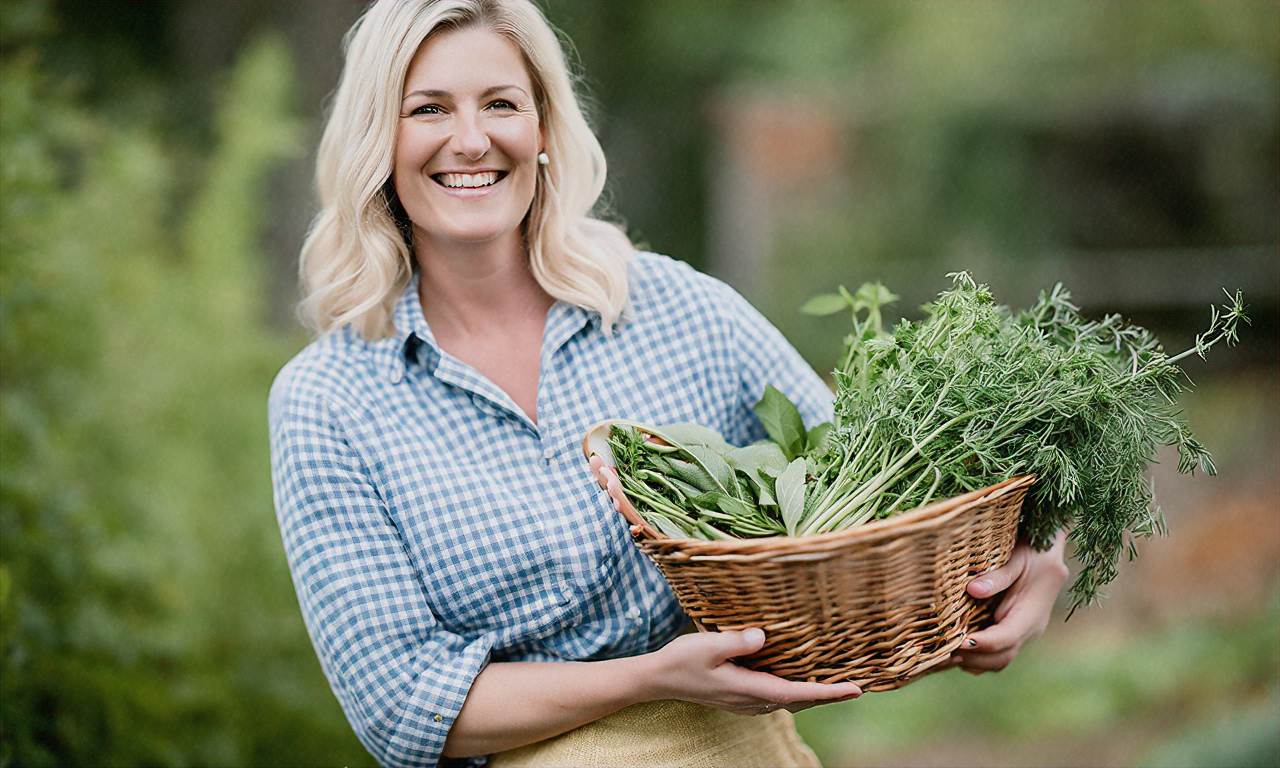Welcome Spring with Bright, Fresh Flavors
The cold winter months are finally giving way to warmer weather, longer days, and the vibrant colors and flavors of spring. As the earth awakens from its slumber, it’s time to savor the seasons with fresh herb recipes that capture the essence of spring.
The mild herbs and greens that come into season in spring lend brightness and verve to meals after months of hearty winter fare. Delicate yet full of flavor, herbs like chives, parsley, cilantro, dill, and mint add fresh appeal to salads, soups, pastas, and more. Embrace the bounty of spring produce like peas, asparagus, and leeks by pairing them with the season’s fresh herbs.
Savor the Seasons: Welcome Spring with Bright, Fresh Herb Recipes
As part of our series “Savor the Seasons: Fresh Herb Recipes for Spring, Summer, Fall, and Winter,” we’ll explore ways to incorporate spring’s herbs into light dishes that celebrate the new season. The term “savor the seasons” reminds us to fully appreciate each season’s offerings when it comes to food and flavors. Let’s discuss some tips for selecting, storing, and cooking with common spring herbs before diving into some mouthwatering recipes you’ll want to add to your spring repertoire.
Choosing the Best Spring Herbs
Look for spring herbs that appear fresh, without wilting, spotting, or yellowing. The leaves should appear perky. Choose herbs with a vibrant green color. When possible, choose herbs that are grown locally and organically. Store fresh herbs loosely wrapped in paper towels and keep them in the refrigerator, where most will last 3 to 5 days. Soft herbs like cilantro, parsley, basil, and mint freeze well either whole or chopped. Simply place them into freezer bags or ice cube trays filled with olive oil or broth for longer storage. Thaw and use within a few months.
Bright Spring Herb Recipes
The mild flavors of chives, parsley, cilantro, dill, and mint add fresh appeal without overpowering other ingredients. These herbs shine when used abundantly in recipes focused on spring produce, lighter proteins like eggs and chicken, and brighter citrus flavors. Consider the following fresh takes on spring meals:
Chive Pesto Pasta – Toast pine nuts and mix with olive oil, lemon zest, garlic, Parmesan, and lots of snipped fresh chives. Toss with hot pasta and top with extra chives. Savor the bright, oniony flavor of chives when they first emerge in spring.
Citrus Mint Salad – Combine mixed baby greens with plenty of fresh mint, orange or grapefruit segments, slivered red onion, toasted almonds or pecans, and a tangy citrus vinaigrette. Allow mint’s cooling flavor to balance the salad’s citrus brightness.
Dill Roasted Asparagus and Potatoes – Toss asparagus spears and cubed new potatoes with olive oil, garlic, salt, and lots of chopped fresh dill. Roast at 400°F until browned and tender, about 30 minutes. Dill and asparagus are the perfect spring pairing.
Cilantro Lime Chicken – Pound chicken breasts to an even thickness and saute with lime juice, chopped cilantro, garlic and spices until cooked through. Serve over rice with extra lime and cilantro. Cilantro adds a summery flair to this quick weeknight dinner.
These recipes allow the flavors of each fresh herb to shine through while complementing other spring ingredients. Experiment with herb pairings and amounts to find your favorite combinations.
More Spring Herb Recipes
Browse our site for many more recipes showcasing spring produce with fresh herbs like chives, parsley, cilantro, basil, dill, and mint. Upcoming articles will cover herb varieties and recipe ideas for summer, fall, and winter. Our series “Savor the Seasons” encourages readers to fully embrace each season’s bounty through cooking with fresh, seasonal ingredients like herbs.
As spring gets underway, gather inspiration from nature’s renewal and treat your taste buds to the bright flavors of the season. Turn to fresh herbs often as you prepare lighter, healthier meals that reflect springtime rejuvenation. Let this be a season of exploration in the kitchen as you infuse the vibrancy of spring greens and herbs into your cooking.
Summer Herbs for Grilling and Light Dishes
The long, sunny days of summer are perfect for firing up the grill and enjoying fresh, flavorful meals outdoors. When creating recipes for grilled meats, fish, vegetables, and more, don’t forget to take advantage of the bounty of summer herbs. Their bright, zesty flavors are ideal for lighter dishes and grilled foods.
Popular warm-weather herbs like basil, cilantro, dill, oregano, and thyme all shine during the summer months. Their flavors sing with seasonal produce like juicy tomatoes, sweet corn, zucchini, and stone fruits. Blending summer herbs into marinades, compound butters, salad dressings, and more is one of the easiest ways to make grilled foods taste even better.
Keep reading for tips on selecting, storing, and preparing summer herbs. You’ll also find a collection of mouthwatering recipes that allow the flavors of cilantro, basil, and oregano to take center stage. From grilled shrimp tacos to charred summer squash salad, these dishes will have you savoring fresh herb recipes all summer long.
Tips for Selecting Summer Herbs
When creating fresh herb recipes for spring, summer, fall, and winter, it all starts with ingredient quality. Follow these simple tips for choosing flavorful herbs at the farmer’s market or grocery store:
– Seek out herbs with vibrant green leaves. Avoid any browning, wilting, or sliminess.
– Opt for herbs sold with their roots attached when possible. They’ll last longer.
– Give herbs a sniff before purchasing. Their aroma should be bright and pronounced.
– For delicate herbs like cilantro and dill, purchase only what you’ll use within a few days.
Proper Storage for Summer Herbs
To keep summer herbs fresh and flavorful as long as possible:
– Store herbs loosely wrapped in paper towels in the refrigerator.
– Place basil stems in a cup of water, like flowers, on the counter.
– Keep oregano, thyme, and other woody herbs in a container on the counter.
– Freeze leftover herbs in oil or water inside ice cube trays for later use.
How to Prepare Summer Herbs
Summer herbs pair perfectly with quick cooking methods like grilling. Follow these tips:
– Use tender herb leaves like basil, mint, cilantro, and dill raw. Add them at the end of cooking or as a garnish.
– Heartier herbs like rosemary, thyme, oregano, and sage hold up well to grilling. Skewer them on kebabs or add whole sprigs while cooking.
– Mince, puree, or finely chop herbs to blend them into marinades, dressings, and compound butters.
– Grind up leftover herbs to make fragrant rubs and spice blends for grilled meats, poultry, fish, and veggies.
Mouthwatering Summer Herb Recipes
This collection of summer recipes allows bright, fresh herb flavors to shine through. From tacos to salads and more, these dishes are perfect for easy summer grilling and meals.
Grilled Shrimp Tacos with Cilantro Lime Slaw
The combination of smoky grilled shrimp, creamy slaw, and vibrant cilantro and lime is utterly addicting. These easy tacos are a go-to summer dinner.
Ingredients:
Shrimp, olive oil, chili powder, garlic, lime, corn tortillas, cabbage, Greek yogurt, lime juice, cilantro
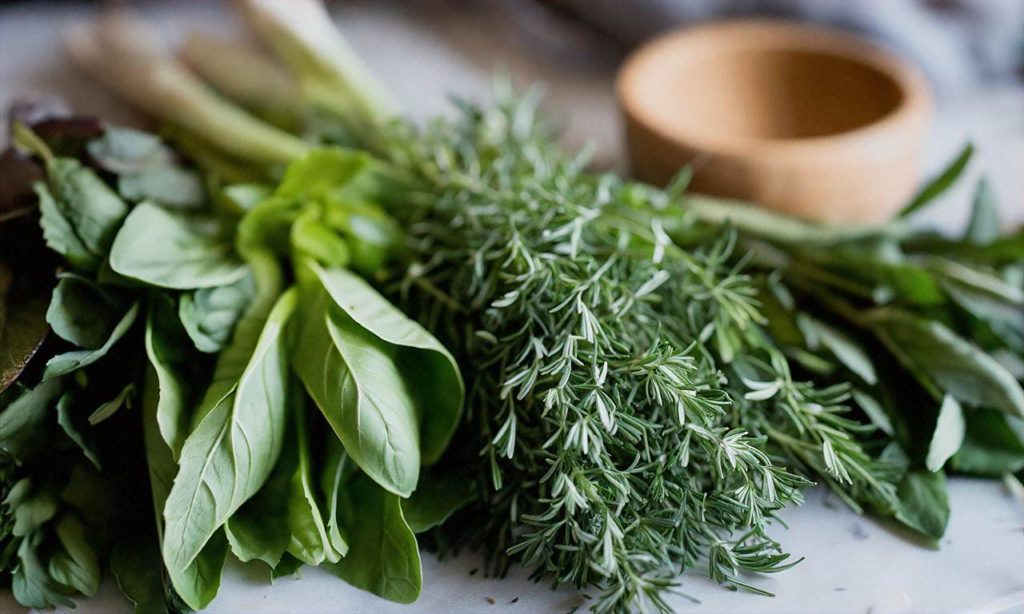
Instructions:
1. Toss shrimp with oil, chili powder, garlic and lime juice. Grill until pink.
2. Mix together thinly sliced cabbage, yogurt, lime juice and cilantro.
3. Warm tortillas. Fill with shrimp and slaw. Top with more cilantro.
Basil Pesto Zucchini Flatbreads with Blistered Tomatoes
Nutty whole wheat flatbreads are topped with sweet basil pesto, meaty grilled zucchini, and blistered cherry tomatoes for an easy yet impressive summer meal.
Ingredients:
Whole wheat pizza dough, olive oil, zucchini, basil pesto, cherry tomatoes, fresh mozzarella, basil leaves
Instructions:
1. Grill or broil zucchini slices until tender and browned.
2. Toss cherry tomatoes with oil. Grill or broil until blistered.
3. Top stretched dough rounds with pesto, zucchini, tomatoes and mozzarella.
4. Grill flatbreads until the cheese melts.
5. Top with fresh basil before serving.
Charred Summer Squash Salad with Oregano Vinaigrette
Take advantage of an abundance of summer squash by tossing grilled slices with this flavor-packed oregano vinaigrette. Blackened squash pairs perfectly with the bright, herby dressing.
Ingredients:
Yellow squash, zucchini, red onion, olive oil, red wine vinegar, oregano, garlic, tomato, feta cheese, lettuce
Instructions:
1. Toss squash and onion with oil. Grill or broil until charred.
2. Whisk together vinegar, oregano, garlic and tomato.
3. Toss grilled veggies with lettuce, feta, and vinaigrette. Top with more oregano.
No matter your favorite summer ingredients and recipes, herbs undeniably make them even better. Let flavorful additions like basil, cilantro and oregano steal the spotlight this season by complementing fresh vegetables, lighter proteins, and seasonal flavors. With a little creativity and these mouthwatering recipes in your repertoire, you’ll fully savor the seasons with fresh herb recipes for spring, summer, fall and winter.

Warm Up with Robust Fall Herb Recipes
As the weather cools down in fall, it’s time to warm up with hearty, robust recipes made even better with fresh and dried herbs. Herbs like rosemary, thyme, and sage add a depth of flavor that pairs perfectly with fall comfort foods. Savor the Seasons: Fresh Herb Recipes for Spring, Summer, Fall, and Winter has plenty of ideas for spicing up your autumn cooking.
Rosemary is one of the most popular herbs to use in fall. Its piney, woodsy notes stand up well to hearty fare like stews, roasts, and root vegetables. Try Rosemary Roasted Potatoes or Rosemary and Garlic Crusted Lamb for a real treat. Fresh or dried rosemary also shines in fall soups like Rosemary Butternut Squash Soup. Even desserts get a kick from this robust herb, as in Rosemary Pear Crisp.
Thyme is another essential herb for fall recipes. It has an earthy, slightly lemony flavor that enhances fall vegetables, beans, grains, and proteins beautifully. Warm up with dishes like Thyme and Mushroom Pot Roast, Barley Risotto with Thyme, or Roasted Chicken with Thyme Gravy. Don’t forget to add fresh or dried thyme to your fall garden vegetable sides too.
Savory sage brings a woodsy, slightly peppery flavor that pairs perfectly with fall fare. It enhances rich meats like pork or duck, hearty bean dishes, and even fall vegetable sides. Try dishes like Sage and Apple Stuffed Pork Chops, White Bean and Sage Soup, or Roasted Delicata Squash with Sage Brown Butter.
Beyond these powerhouse herbs, there are many other options for spicing up fall meals. Marjoram, parsley, oregano, and bay leaves all make tasty additions to fall recipes. Check out Savor the Seasons: Fresh Herb Recipes for Spring, Summer, Fall, and Winter for even more ideas.
With a little creativity, you can incorporate fresh or dried herbs into just about any fall recipe. Here are some tasty ways to use them:
Stews and Chilis: Rosemary, thyme, sage, and bay leaves infuse rich flavor into fall stews, chilis, and braises.
Roasts: Coat roasts with an herb paste or sprinkle them generously with rosemary, thyme, parsley, oregano, or marjoram before roasting.
Soups: Add a bouquet garni, thyme, sage, parsley, or other herbs to fall vegetable and bean soups.
Gravies and Sauces: Simmer rosemary, thyme, sage, marjoram, or other herbs into the liquid for extra flavor.
Salads: Toss hearty fall salads with fresh parsley, thyme, sage, oregano, and other herbs.
Vegetable Sides: Roast fall vegetables with fresh rosemary, thyme, sage, or oregano.
Breads and Grains: Knead rosemary, thyme, oregano, parsley or other herbs into bread dough or add them to pilafs, risottos or polenta.
Desserts: Add rosemary, thyme, sage or bay leaves to fall fruit desserts.
With Savor the Seasons: Fresh Herb Recipes for Spring, Summer, Fall, and Winter as your guide, the possibilities for jazzing up fall fare with herbs are practically endless. So get cooking and spice up the season! What robust fall herb recipe will you warm up with first?
Add Zest to Winter Meals with Potent Herbs
The cold winter months present a perfect opportunity to warm up from the inside out with flavorful, aromatic herbs. Rather than letting your cooking grow dull when fresh produce is less readily available, turn to herbs to add interest to simple winter ingredients. Certain potent, zesty herbs are particularly well-suited for transforming basic dishes into vibrant, satisfying meals during the colder seasons.
Herbs like bay leaves, marjoram, rosemary, sage, and thyme all pack a strong, pronounced punch of flavor that stands up well to hearty winter fare. These herbs infuse dishes with warmth and complexity without overpowering other ingredients. With their intense flavors, a little goes a long way in adding major flavor. Whether mixed into stews, roasted meats, casseroles, or winter vegetables, these herbs build depth of taste and cut through heavier, richer ingredients.
Marjoram’s sweet, woodsy notes are perfect for seasoning roasted root vegetables and winter squash. The subtle lemon-pine flavor of rosemary beautifully complements roasted meats and hearty stews. Thyme adds a refined, elegant aroma to soups, grains, and savory pies. And bay leaves lend a distinctly aromatic, slightly bitter flavor that makes an excellent addition to long-simmered dishes like chili, pot roasts, and bean or lentil soups.
While fresh herbs taste best in the spring and summer months, potent dried herbs stand up to cooking extremely well. In fact, their flavors become even more concentrated through drying, making them ideal for infusing big, bold taste into cold weather cooking. With just a dash of these dried herbs, you can take simple comfort foods from boring to brilliant. Read on for tips, tricks and delicious recipes for adding zest to your meals using flavor-packed herbs this winter. Say goodbye to bland and embrace delicious herb-infused dishes all season long.
Tips for Cooking with Potent Dried Herbs
– Start with small amounts – a little dried herb goes a long way! Add pinch by pinch.
– Rub or crush herbs before adding to release oils and flavors.
– Add early in cooking process so flavors develop and meld.
– Pair woody herbs like rosemary and thyme with roasted meats, hearty stews and vegetables.
– Use bay leaves and marjoram for slow-cooked foods like soups, chilis and braised dishes.
– Try making compound butters, herb salts, infused oils or vinegar to add instant flavor.
Warm and Cozy Dinner Recipes with Dried Winter Herbs
These hearty, comforting winter dishes are made extra inviting with the addition of aromatic herbs. The following recipes will chase away any chill while pleasing your palate. Be sure to keep potent dried herbs like marjoram, rosemary, sage and thyme on hand this season to add satisfying flavor to all your cold weather cooking.
Thyme and Sage Roasted Chicken
This herb-rubbed roast chicken recipe is simple to prepare but packs incredible flavor. The savory combination of thyme, sage and garlic infuses the meat and juices with aromatic taste in every bite. Serve this satisfying entrée with roasted root vegetables and brown rice pilaf for a complete, delicious meal on a cold night.
Beef and Barley Stew with Bay Leaves
Tender beef, hearty vegetables and nutty barley come together in this rich, mouthwatering stew seasoned to perfection with bay leaves. As the stew simmers, the bay leaves slowly impart their distinctively aromatic, slightly herbal flavor into the broth. The result is a wonderfully cozy, comforting meal for a blustery winter evening at home.
Marjoram and Rosemary Roasted Winter Vegetables
Root vegetables and squash take on an incredible depth of flavor when tossed in oil and herbs and roasted to caramelized perfection. The unique piney notes of rosemary and subtle citrus of marjoram meld together beautifully to complement the natural sweetness of the vegetables. This easy roasted veggie medley makes a stellar accompaniment to roast meats and poultry.
As you snuggle up and keep warm this winter, be sure to have flavorful herbs like marjoram, rosemary, sage and thyme close at hand in your pantry. Just a small amount of these aromatic dried herbs can enhance the flavors of your cooking all season long. Let these potent herbs lend their magic to transform simple comfort foods into truly mouthwatering meals. This winter, savor hearty, soul-satisfying dishes highlighted with the vibrant, complex flavors of dried herbs.
Spring Herbs: Recipes with Chives, Mint, Parsley
Welcome the fresh flavors of spring with herbs like chives, mint, and parsley. These bright, verdant herbs are at their peak in the springtime and add vibrancy and lightness to recipes.
Chives are the first fresh herb to emerge in early spring. Their hollow grass-like stems and mild oniony flavor are perfect for egg, potato, and vegetable dishes. Try mixing snipped chives into creamy mashed potatoes, scrambled eggs, green salads, or compound butters and spreads. Popular in many cuisines, this versatile spring herb brings a pop of green onion flavor and vivid green flecks to any dish.
Cool, refreshing mint is synonymous with springtime. Its bright, pepperminty flavor pairs deliciously with fruits, beverages, salads, legumes, and more. The options for cooking with this very popular herb are endless. Use minced mint in fruit salads with berries and melons, mix it into lemonade, mojitos, and iced tea for a hit of refreshment, or blend it into dairy products like yogurt. It also makes a wonderful garnish. Parsley is another quintessential spring herb that is ubiquitous in many cuisines. Curly leaf and Italian flat leaf varieties add fresh flavor and bright green color to everything from salads to vegetable dishes, pasta, fish, chicken, and more. Sprinkle chopped parsley over finished dishes as a flavorful, colorful garnish.
“Savor the Seasons: Fresh Herb Recipes for Spring, Summer, Fall, and Winter” are at their freshest and most flavorful in springtime. As the weather warms, incorporate peak season spring herbs like chives, mint, and parsley into your cooking to welcome brighter, verdant flavors. Read on for some delicious recipes showcasing these herbs.
Lemony Chive Compound Butter
This easy compound butter recipe combines fresh chives, lemon zest, and butter for a quick flavor boost. Use it on steamed vegetables, baked potatoes, fish, chicken, or toast. The bright flavors are perfect for spring.
Ingredients:
1 stick softened butter
2 tablespoons minced chives
1 teaspoon lemon zest
1⁄4 teaspoon lemon juice
1⁄4 teaspoon salt
Instructions:
Blend together all ingredients in a small bowl with an electric mixer until fully incorporated. Scrape down sides as needed. Transfer the compound butter onto a sheet of parchment or wax paper and roll into a log. Twist ends to seal and refrigerate until firm. Slice off pieces to use on hot foods so the butter melts over them.
Citrus Mint Salad
This simple yet refreshing salad pairs sweet orange segments and sliced red onion with fresh mint, parsley, olive oil, and citrus vinaigrette. It’s light, brightly flavored, and perfect for spring and summer.
Ingredients:
3 large oranges, peeled and segmented
1⁄2 small red onion, thinly sliced
1⁄4 cup chopped fresh mint
1⁄4 cup chopped Italian parsley
3 tablespoons extra virgin olive oil
2 tablespoons lime juice
1 tablespoon lemon juice
1⁄2 teaspoon honey
Salt and pepper to taste
Instructions:
In a large bowl, gently mix together the orange segments, onion, mint and parsley.
In a small bowl, whisk together the olive oil, lime juice, lemon juice, honey, and salt and pepper to taste. Drizzle vinaigrette over the salad and gently toss to combine. Taste and adjust seasoning as desired. Serve immediately.
Minty Pea Salad
This easy spring salad featuring fresh mint and peas makes a bright, flavorful side dish for meals or bbqs. The sweet snap peas and peas, creamy feta, and aromatic mint and parsley pair deliciously together.
Ingredients:
2 cups fresh or frozen peas
2 cups snap peas, strings removed, chopped
1⁄4 cup crumbled feta cheese
1⁄4 cup chopped mint leaves
1⁄4 cup chopped Italian parsley
3 tablespoons extra virgin olive oil
2 tablespoons lemon juice
1 small shallot, minced
1 teaspoon Dijon mustard
Salt and pepper to taste
Instructions:
Blanch the peas in boiling salted water for 2 minutes if using fresh, or thaw if using frozen. Drain and rinse under cold water to stop cooking.
In a large bowl, mix together the cooked peas, snap peas, feta, mint and parsley.
In a separate small bowl, whisk together the olive oil, lemon juice, shallot, mustard, and salt and pepper to taste until emulsified. Pour vinaigrette over the salad and toss gently until combined and everything is coated evenly. Adjust seasoning if desired. Serve right away or refrigerate until ready to eat.
Spring Pasta with Parsley Pesto

This easy homemade parsley pesto sauce tossed with pasta makes a quick, fresh weeknight dinner. The bright Italian flat leaf parsley, garlic, lemon, and Parmesan gives vibrant flavor and color that’s perfect for welcoming spring.
Ingredients:
12 ounces pasta (penne, farfalle, or fusilli work well)
1 cup packed Italian parsley leaves
1 garlic clove
1⁄3 cup Parmesan cheese, grated
1⁄3 cup extra virgin olive oil
3 tablespoons lemon juice
1⁄4 cup pasta cooking water
Salt and pepper to taste
Instructions:
Bring a large pot of salted water to a boil. Cook pasta according to package directions until al dente. Reserve at least 1⁄4 cup of the cooking water before draining.
While pasta cooks, make the parsley pesto. In a food processor or blender, pulse together the parsley, garlic, Parmesan, olive oil and lemon juice until smooth, stopping to scrape down sides as needed. Stream in the pasta water and blend again until incorporated. Season to taste with salt and pepper.
Drain pasta and return to the pot. Add pesto and toss, coating pasta completely. Add more cooking water 1 tablespoon at a time if too thick. Serve hot topped with more Parmesan cheese if desired. Freshly cracked black pepper is also delicious.
These recipes highlight the starring roles that chives, mint, and parsley can play in spring cooking. Their bright, fresh flavors help “Savor the Seasons”. Turn to these verdant herbs often when warmer weather arrives. Embrace and showcase peak season produce with delicious herb-infused recipes all spring and summer long.
Grill and Chill: Summery Cilantro, Basil, Oregano Dishes
When the weather heats up, it’s time to fire up the grill and enjoy the sunny days of summer. Cilantro, basil, and oregano are fresh herbs that pair perfectly with the lighter dishes we crave during the hot summer months. With their bright, zesty flavors, these herbs are ideal for spicing up chicken, seafood, vegetables, and more.
In this article, we’ll share some of our favorite summer recipes featuring cilantro, basil, and oregano. The light dishes highlighted here are perfect for backyard barbecues and casual summer gatherings with friends. Read on for tips and recipes on how to use these flavorful herbs to add a burst of summer freshness to your meals.
Cilantro Lime Chicken
This zesty chicken dish is bursting with the fresh flavors of cilantro and lime. Boneless chicken breasts are marinated in a mix of olive oil, lime juice, cilantro, garlic, and spices. Grilled until lightly charred and juicy, this simple chicken recipe really lets the summery flavors shine through. Scatter extra cilantro over the top for a pop of color and freshness. Savor the seasons with this bright chicken perfect for summer.
Basil Pesto Vegetable Kabobs
Upgrade your veggie kabobs by brushing them with flavorful basil pesto before grilling. Zucchini, tomatoes, mushrooms, bell peppers, and red onion are threaded onto skewers and brushed with the bright green basil and garlic pesto. Grill the pesto veggie kabobs until tender, turning occasionally to avoid burning. The summer vegetables caramelize while the basil pesto adds a delightful flavor boost. For an even bigger pesto flavor, dice up some extra basil leaves and sprinkle them over the hot-off-the-grill kabobs. This light, healthy veggie grill recipe is a great way to savor summer’s basil bounty.
Oregano Shrimp and Vegetable Foil Packs
For a full meal cooked right on the grill, try these foil pack shrimp and veggie dinners. Shrimp is nestled with potatoes, corn, and red onion inside a foil pouch along with olive oil, oregano, garlic, salt, and pepper. Seal up the foil packs and place directly on the hot grill, rotating occasionally. The shrimp and vegetables steam inside the packs, soaking up all the flavors. The oregano adds a wonderful woodsy flavor to the seafood and veggies. Let the foil packs rest for a few minutes before opening—the steam will finish cooking the ingredients. Dinner is served!
Cilantro Lime Shrimp Tacos with Basil Avocado Crema
Take taco night outside to the grill with these tasty cilantro lime shrimp tacos. Marinated shrimp skewers are grilled until just opaque and then layered into warm corn tortillas along with sliced avocado, tomatoes, shredded cabbage, and a drizzle of basil avocado crema. The crema sauce is blended from Greek yogurt, avocado, lime juice, basil, and garlic for a cool, creamy topping to the tacos. Scatter extra cilantro over the finished tacos for some added vibrance. This recipe is full of bright flavors and textures perfect for summer grilling.
No-Cook Summer Pasta Salad with Cilantro Pesto
On hot summer days when you don’t want to turn on the oven, try this easy no-cook cilantro pesto pasta salad. Cooked pasta shells are simply tossed with the fresh cilantro pesto then added to tomatoes, cucumbers, red onion, feta cheese, and kalamata olives. Chill the pasta salad for at least an hour before serving to let the flavors meld. The cilantro pesto infuses each bite with flavor. No cooking required means this chilled pasta salad is a stress-free way to enjoy cilantro at the peak of summer.
Oregano Chicken Souvlaki with Tzatziki Sauce and Basil
Chicken souvlaki skewers are a classic Greek grilled meal. In this flavorful version, chicken is threaded onto skewers alternately with slices of red onion and bell pepper. A marinade of olive oil, lemon juice, oregano, garlic, and spices infuses the chicken and vegetables with taste as they grill. Served atop fluffy pitas and topped with cooling tzatziki sauce and fresh basil leaves, these Greek chicken skewers are packed with herby flavor. Oregano shines in the chicken while basil gives the tzatziki sauce a fresh finish. This is Greek grilling at its best!
No matter what recipes you choose, cilantro, basil and oregano are sure to give your summer grilling a flavorful boost. As you try out these herb-focused recipes, remember to savor the seasons with fresh herb recipes for spring, summer, fall and winter. Keep the summer vibes going strong by utilizing fresh herbs at their peak. Let cilantro, basil and oregano infuse your chicken, meat, seafood and veggies with bright flavors perfect for the sunny season. Grill and chill all summer long with dishes that let these delightful herbs shine.
Hearty Fall Fare with Rosemary, Thyme, Sage
Fall is the perfect time to warm up with hearty, herb-infused dishes. As the air turns crisp, rosemary, thyme, and sage add robust flavor to comforting meals. With their intense, earthy notes, these herbs are ideal for slow-cooked stews, roasted meats and vegetables, and nutty grains.
Savor the Seasons with Rosemary
Known as the “dew of the sea” for its refreshing scent, rosemary packs an evergreen punch. Its piney flavor enhances the natural sweetness of fall’s bounty, from squash to root vegetables. Slow-roasted delicata squash takes on warm, woodsy notes with a rosemary brown butter sauce. Pork tenderloin marinated in orange juice, olive oil, and chopped rosemary develops a slight citrusy bite when roasted. Even simple baked Russet or sweet potatoes taste luxurious with a sprinkle of minced rosemary leaves and coarse salt.
Fall Thyme Recipes
Thyme tastes like fall distilled into an herb, with hints of cloves and lemon. It adds vibrancy when paired with autumnal ingredients like Brussels sprouts, wild mushrooms, pumpkin, and cranberries. Saute shrimp with thyme leaves and serve over butternut squash risotto for an elegant dinner. Roast chicken or turkey with fresh thyme sprigs under the skin for a flavorful holiday centerpiece. For vegetarians and vegans, thyme complements the nutty taste of most grains, especially farro, barley, and wild rice.
Sage Seasoning for Hearty Fall Meals
With its musky, peppery notes, sage packs a flavorful punch. It enhances richer fall ingredients like squash, nuts, mushrooms, and aged cheese. Saute apples, onions, and sage to mix into a squash or pumpkin soup. Add sage to the dry rub or brine for pork chops or roast chicken. Mix crumbled sausage with sauteed sage, onions, garlic, and kale for a flavorful pasta topping. For breakfast, scramble eggs with wilted sage leaves, then spread the sage-studded eggs onto crusty toast.
Herb Combinations for Bold Fall Flavor
While each herb shines on its own, certain combinations create synergy. Saute mushrooms, rosemary, and thyme for an umami-packed side dish. Stuff acorn squash halves with a mixture of sausage, apples, sage, parsley, and cornbread. Roast chicken or pork layered with sage leaves under the skin to infuse the meat with woodsy flavor.
Simple Ways to Use Fresh Herbs
Experiment by adding rosemary, thyme, or sage to your favorite fall recipes. Place whole herb sprigs under roasting vegetables or meat to gently perfume the dish. Mince herbs to mix into a compound butter for spreading onto bread, sweet potatoes or winter squash. Make herb-infused oils by heating olive oil with herbs in a small saucepan, then strain and store for later use. Chop or tear herbs to sprinkle onto finished dishes just before serving.
Preserve Herbs’ Bright Flavor
To keep herbs fresh for several days, trim the stems and stand them upright in a jar of water. Cover loosely with a plastic bag. For longer storage, wash herbs gently and dry with paper towels until no moisture remains on leaves. Place whole sprigs or leaves in resealable plastic freezer bags, press out excess air, and freeze for 4-6 months. Alternatively, puree chopped herbs with a bit of oil or water and freeze in ice cube trays for easy use. Thaw and add to sautés, soups, and more. With a few simple tricks, you can savor the seasons with fresh herbs year-round.
Spice Up Winter: Dishes with Bay, Marjoram, Savory
The cold winter months are a perfect time to warm up with delicious dishes featuring flavorful herbs like bay, marjoram, and savory. These potent herbs can add lots of taste to all kinds of winter meals. Read on for some mouthwatering recipes using these herbs to spice up your winter!
Bay Leaf Basics
The bay leaf is well known for adding its distinctive flavor to soups, stews, bean dishes, and more all year long. But this potent herb is especially nice for making hearty winter fare even more delicious. Bay leaves have an assertive, slightly woodsy flavor that enhances wintry favorites like chili, pot roast, and long-simmered soups. Use whole bay leaves in your cooking and then remove them before serving. Here are some delicious ways to cook with bay leaves this winter:
– Add 2-3 whole bay leaves to your favorite chili or beef stew recipe. It boosts the richness and complexity.
– Slip a bay leaf into the cavity before roasting a whole chicken or turkey. It infuses a subtle flavor.
– Simmer bay leaves in tomato-based pasta sauces, marinara, or Bolognese. It enhances the tomato flavor.
– Use bay leaves in lentil or split pea soup. It gives great background notes.
You’ll be surprised how much a few bay leaves can spice up winter! Keep reading for specific bay leaf recipe ideas.
Marjoram Magic
Sweet and slightly spicy marjoram is another great herb for livening up meals in the colder months. It has hints of oregano’s woodsy notes but also minty undertones. Marjoram excels when paired with meat dishes, tomato sauces, mushroom recipes, eggs, cheese, and more. It brings warmth and complexity. Here are some tasty ways to cook with marjoram in the winter:
– Sprinkle chopped marjoram on pizza or flatbreads before baking.
– Mix marjoram into mashed potato recipes.
– Add marjoram to pasta sauces, lasagna, or egg dishes.
– Use marjoram when roasting, stewing, or braising meat.
– Mix marjoram into stuffing recipes for extra depth.
Keep marjoram on hand this winter to spice up all kinds of dishes!
Savory’s Secret Powers
Savory is the most obscure of the herbs we’re featuring here, but it deserves more attention. This potent herb has a peppery bite similar to thyme along with subtle mint and sage notes. It enhances the other flavors in a dish beautifully. Use winter cooking as a chance to experiment with savory. It’s great in things like:
– Hearty bean or lentil stews and soups
– Stuffings, meatloaf, or sausage dishes
– Roasted vegetables like potatoes or squash
– Mushroom ragouts and risottos

– Gravies and pan sauces
Savory’s flavor holds up well to long cooking times, so have fun trying it in simmered dishes this winter for more depth of flavor. Keep reading for actual recipes using these three fabulous herbs to spice up your cold weather meals!
Wonderful Winter Bay Leaf Recipes
If you’re not already cooking with bay leaves in the winter, you’re missing out! This unique herb adds intrigue to all kinds of hearty cold weather fare. For a simple way to enjoy bay’s magic, add 2 leaves to your favorite homemade soup or stew recipe. But here are some recipes specifically designed to highlight bay’s beautiful winter flavor:
Moroccan Chicken and Chickpea Soup with Bay Leaves
This vibrant tomato-based soup gets incredible depth from cinnamon, cumin, paprika, and bay leaves, along with lemon and chicken. It’s easy, warming, and delicious!
Bay Leaf-Roasted Potatoes
Roasting potatoes is a cold weather favorite, but bay leaf makes the flavor even better. These crispy spuds get tossed in oil and seasoned with rosemary, garlic, and bay leaf for simple but tasty roasted potatoes.
Bay Leaf Bolognese Sauce
A rich meat sauce is very cozy on a winter night! Slow-cooked ground meat simmered with tomatoes, wine, milk, and bay leaf makes a fabulous Bolognese for topping pasta.
These recipes highlight how versatile and easy bay leaf is for spicing up winter meals. Keep a supply on hand for impromptu use too!
Marjoram Magic: Tasty Winter Recipes
Marjoram is an underappreciated herb that can make your cooking more interesting in the cold months. Its sweet woodsy notes with hints of mint and spice make a great addition to hearty winter fare. Try marjoram in these recipes:
Baked Penne with Sausage, Tomatoes, and Marjoram
The classic Italian flavors of tomato, meat, cheese, and herbs meet in this luscious baked pasta. Marjoram adds its magical touch.
Marjoram and Garlic Hasselback Potatoes
Crispy hasselback potatoes get kicked up with garlic, olive oil, and marjoram. They make a fabulous side to serve with any winter meal.
Mushroom and Marjoram Frittata
Eggs, cheese, and mushrooms combine in a delightful skillet frittata. A bit of marjoram adds depth and brings the flavors together beautifully.
Marjoram deserves more time in your winter cooking rotation. Embrace this underrated herb!
Savory Winter Dishes: Recipes with Depth
Don’t overlook the incredible flavor potential of savory! This herb adds fabulous taste to hearty winter fare. Experiment with savory in recipes like:
Savory Bean and Veggie Pot Pie
Wintry vegetables, beans, and creamy sauce topped with flaky pastry get an flavor boost from savory in this updated, hearty pot pie.
Savory Sausage and Apple Stuffing
Savory is perfect for stuffing, pairing nicely with sausage, apples, sage, parsley, celery, and broth in this turkey or chicken accompaniment.
Cider Braised Pork with Savory
Boneless pork shoulder braises slowly in apple cider, garlic, herbs, and savory for fall-apart tender, full-flavored meat. Serve over mashed potatoes.
Make this winter a delicious one with bay, marjoram, and savory recipes that will warm you up from the inside out!
Best Ways to Use Popular Spring Herbs
Welcome to the spring herb guide! The vibrant green flavors of chives, mint, and parsley are perfect for ushering in the freshness of spring. This season offers the first taste of herbs after the long winter. Savor the Seasons by exploring the best ways to use these popular spring herbs in your cooking.
Chives
The slender, grassy chive delivers a mild oniony bite. Its hollow stems impart a delicate flavor that enhances egg dishes, soups, salads, and more. Best uses for chives in spring:

– Add freshly snipped chives as a lively final garnish on creamy soups. Their vibrant green color and subtle onion flavor provide a pop of spring.
– Mix minced chives into herb butters and spreads for a spring twist on toast and sandwiches. The grassy taste of chives makes them an ideal addition to creamy and buttery foods.
– Stir chopped chives into plain Greek yogurt to use as a tasty dip or topping for baked potatoes, fish, and chicken. The tang of the yogurt pairs nicely with the mellow onion notes from the chives.
Mint
From desserts to drinks, mint’s cool freshness shines in spring. Its bright flavor works well in both sweet and savory dishes. Best uses for mint this spring season:
– Create mint simple syrup to sweeten iced tea, lemonade, and cocktails. Muddle fresh mint leaves in a simple syrup mixture of sugar and water to infuse the liquid with refreshing flavor.
– Mix chopped mint into fruit salads and salsa for a burst of color and herbaceous flavor. It brightens up melons, berries, peaches, mangoes, and tomatoes.
– Add mint to marinades and rubs for lamb, chicken, and fish. Its clean flavor cuts through richer meats. Blend mint with garlic, lemon juice, and olive oil for a light marinade.
Parsley
Parsley’s fresh, grassy flavor serves as a vibrant seasoning and garnish. A classic component of Middle Eastern, European, and American cooking, parsley packs a nutritious punch with vitamins A, C, and K. Best uses for parsley this spring:
– Boost salads by sprinkling in some chopped curly parsley for color, texture, and a peppery lemon-herb taste. Toss it with mixed greens, vegetable salads, pasta salads, potato salads, and more.
– Make chimichurri sauce with parsley as the star. Blend it with garlic, oregano, olive oil, vinegar, and red pepper flakes for a bright green Argentinean-style sauce that excels as a marinade or drizzled over grilled meats and vegetables.
– Garnish soups and grain bowls with a sprinkle of freshly chopped Italian parsley. Its fresh herby flavor and vibrancy makes it a perfect finishing touch.
Remember to make the most of spring’s fresh herb bounty with these bright and lively recipes. The mild onion tones of chives, the cool minty refreshment from mint leaves, and the fresh herby notes of parsley all lend themselves perfectly to ushering in a new spring season. Savor the Seasons by exploring even more ways to cook with the vibrant flavors of these popular spring herbs!
Keep It Light: Let Summer Herbs Shine
The long, sunny days of summer are perfect for enjoying meals alfresco. When creating recipes to savor on the patio, opt for bright, fresh herbs that complement the season’s bounty of produce and lighter proteins. Keeping things light allows the flavors of basil, cilantro, dill, and oregano to shine through.
Start off a summer meal with a bright salad topped with Savor the Seasons’ cilantro lime vinaigrette. The tart lime and bright, grassy cilantro are a perfect way to welcome guests to a casual summer gathering. Grill up shrimp, chicken, or flank steak, then serve with our summery cilantro rice. The fresh, global flavors are light enough not to weigh down a hot summer evening. End the night with berries and cream dressed with a splash of basil simple syrup for a sweet, yet light dessert.
The possibilities are endless when utilizing summer’s fresh herb harvest. Follow our suggestions below to keep things light and let the herbs be the star in these seasonal recipes.
Bright Salads
Basil, cilantro, dill, and mint are perfect herbs for light, summery salads. Take advantage of summer produce like juicy tomatoes, crisp cucumbers, and peppery arugula by pairing with the fresh herbs. The possibilities are endless – Greek salad with mint, Caprese with basil, all-American potato salad with dill. Don’t be afraid to get creative and come up with your own combinations! The herbs and vegetables are meant to be together during these sunny months.
Our favorite salads to Keep It Light include:
Cucumber Dill Salad: Thinly sliced cucumbers and red onion tossed in a light dill dressing for a simple side.
Watermelon Feta Mint Salad: Cubed watermelon, crumbled feta, and torn mint leaves create a sweet and savory salad.
Mexican Street Corn Salad: Grilled corn, peppers, onion, cilantro, lime and cotija cheese for a fresh take on elote.
Protein Packed Bowls
Summer produce like sweet corn, squash, eggplant and peppers were made for the grill. Take advantage by grilling them up and serving over fresh herbs and grains for a satisfying one-bowl meal. Steak, chicken and shrimp also grill up nicely without needing heavy sauces. The possibilities are endless, so grill up your favorites and keep things light!
Our top Protein Packed Bowls include:
Steak & Arugula Bowl with Chimichurri: Grilled steak over arugula and tomatoes, topped with a bright cilantro and parsley chimichurri sauce.
Lemon Chicken & Herb Quinoa: A light summer take on chicken salad with quinoa instead of mayo-laden dressing.
Shrimp & Summer Veggie Skewers with Chimichurri Rice: Double down on the herbs by pairing cilantro-lime rice with chimichurri shrimp and veggie skewers.
Shareable Sides
Don’t forget about the sides! Letting the herbs and vegetables shine makes for easy shareable dishes perfect for passing around a summer table. Think grilled vegetables, herb-loaded potatoes and grains, pesto drizzles, fresh salsas and more.
Our favorite fresh Shareable Sides include:
Hasselback Herb Potatoes: Crispy, cheesy hasselback potatoes loaded up with parsley, dill and chives.
Tomato Cucumber Salad: Fresh sliced tomatoes & cukes tossed in a red wine vinegar oregano dressing.
Cilantro Lime Rice: Bright rice pilaf with cilantro and lime to complement grilled meats or Mexican dishes.
No-Cook Sauces and Spreads
When it’s too hot to turn on the oven or stove, whip up herb-focused sauces and spreads that require no cooking. Blend up chimichurris, pestos, tapenades and salsas to dollop onto everything from sandwiches to grilled meats and vegetables. Bonus – they often last for a week or more in the fridge!
Our top No-Cook Sauces include:
Classic Basil Pesto: Blend basil, pine nuts, garlic and olive oil for an easy sauce for pasta, chicken and more.
Cilantro Jalapeño Chimichurri: A zesty chimichurri made for steak, shrimp, chicken and vegetables.
Olive Rosemary Tapenade: Chopped olives and fresh rosemary makes for a unique, shareable spread.
No Matter the Protein, Herbs Make it Better
No need to weigh down your summer meals with heavy sauces. A little drizzle of chimichurri or pesto is all steak, chicken, shrimp and white fish need to shine. Grilling is a must, but the possibilities go far beyond the barbecue.
Try our favorite summery proteins:
Mojo Chicken Bowls with Cilantro Lime Rice
Lemon Garlic Shrimp & Veggies
Grilled Flank Steak with Chimichurri
Pesto White Fish & Zucchini Noodles
Sweet Summer Treats
Berries and stone fruits own the summer. Keep dessert light by letting the fruit shine with just a kiss of herb. Whip cream with lemon basil, blend peach basil ice cream or puree berries into mint syrup for drizzling.
Our favorite sweet endings include:
Lemon Basil Blueberry Crisp: Skip the heavy toppings and let the fruit shine with just a hint of basil.
Peach Raspberry Mint Sorbet: Sweet summer fruits swirled with fresh mint for a cool, refreshing treat.
Watermelon Basil Granita: Sweet watermelon with a kiss of basil for a unique spin on sorbet.
We hope our summer herb recipes have inspired you to keep things light this season. Be sure to check out the rest of our Savor the Seasons content for more fresh herb recipes perfect for spring, fall and winter as well!
Fall Comfort Foods Made Better with Herbs
As the weather turns crisp and the leaves start to fall, our cravings turn to warm, comforting fall dishes. Fortunately, fresh herbs can add a flavor boost to all your favorite autumn recipes. Whether you’re baking, braising, roasting or simmering, herbs lend a depth of flavor that enhances any cozy comfort food.
The rich, woodsy notes of rosemary, thyme and sage make them perfect for enhancing the natural flavors of heartier fall ingredients. These aromatic herbs pair beautifully with foods like roasted root vegetables, braised meats, stuffed squash, and creamy pasta bakes. Just a sprinkle of chopped fresh herbs or a few sprigs added to the cooking liquid can make a dish taste like it simmered all day, even if you only have time for a quick weeknight meal.
Here are some delicious ideas for fall comfort foods made better with herbs:
Rosemary Roasted Chicken and Vegetables
This sheet pan dinner couldn’t be simpler. Toss chicken pieces and fall veggies like potatoes, carrots, parsnips and Brussels sprouts with olive oil, salt, pepper and lots of chopped rosemary. Roast until the vegetables are caramelized and chicken skin is crispy. The rosemary infuses everything with its piney fragrance.
Thyme and Sage Stuffing
For a flavor boost to your Thanksgiving stuffing, saute onions and celery in butter or olive oil. Add chopped fresh thyme and sage and let the herbs bloom to release their flavors. Then simply mix with your favorite bread stuffing recipe. The herbs provide a savory depth that enhances the rich flavors of the stuffing.
Braised Short Ribs with Red Wine and Rosemary
Melt-in-your-mouth tender short ribs deserve an equally luxurious herbal flavor. As the ribs braise for hours in red wine, the wine and herbs form a rich, glossy sauce. Sprigs of rosemary infuse the sauce with their aroma. Serve the fall-off-the-bone ribs over creamy polenta or buttery mashed potatoes.
Creamy Thyme and Leek Baked Pasta
Comfort food at its finest, this rich baked pasta dish gets a flavor lift from sauteed leeks and fresh thyme. Simply prepare your favorite pasta bake recipe, adding chopped thyme leaves and sliced leeks that have been sauteed in olive oil or butter until softened. The sweet allium flavor of the leeks and woodsy thyme complement the creamy cheese sauce.
Slow Cooker Beef Stew with Bay Leaves
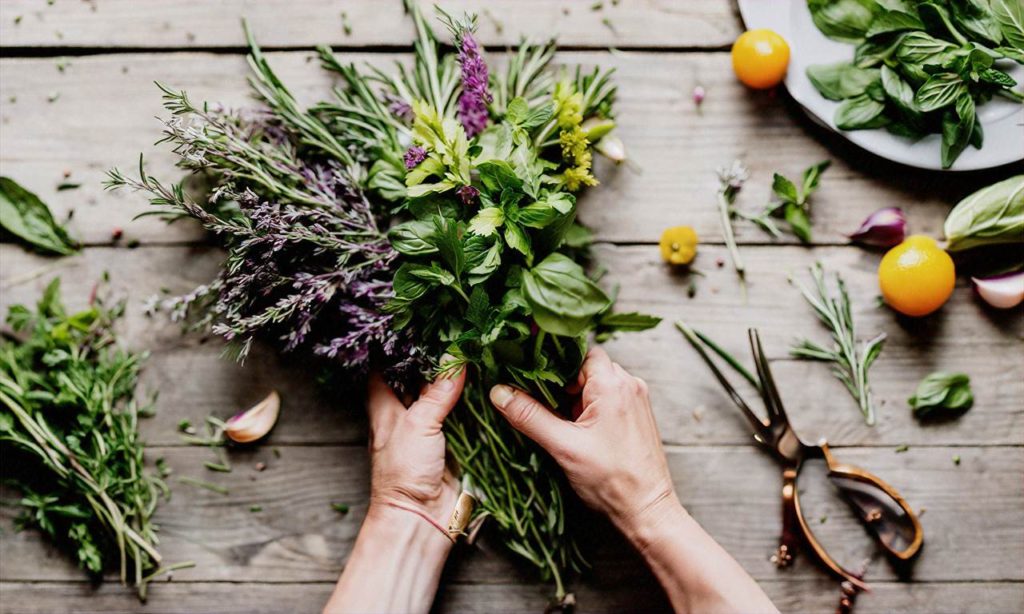
Let your slow cooker do the work to create fall stew filled with tender beef and vegetables. Brown the beef first to develop lots of flavor. Then simply add fall veggies like potatoes, carrots and onions and seasonings like garlic, salt, pepper and bay leaves. The bay leaves will lend a subtle warmth. Serve the hearty stew with crusty bread.
Cider Braised Pork with Sage
Pork shoulder or pork butt braises into succulent shreds with just a few hours in the oven or slow cooker. Brown the pork first, then let it braise in apple cider, chicken or vegetable broth and fresh sage leaves. The sage adds its distinctive savory, slightly peppery flavor to the sauce. Shred the ultra-tender pork and serve on buns for pulled pork sandwiches.
As you can see, herbs are an easy way to make fall comfort food shine. With just a little chopped rosemary, thyme, sage and other fresh herbs, you can take simple braises, roasts, bakes and stews from dull to delicious. So go ahead and cozy up with bowl of creamy herbed pasta or tender braised meat this fall. Just be sure to relish all the flavors that fresh herbs add as you savor the season with some soul-warming comfort food.
Warm Up from Within with Winter Herb Recipes
The cold winter months present a perfect opportunity to warm up from within with hearty meals and herbs that add robust, earthy flavors. As part of our series “Savor the Seasons: Fresh Herb Recipes for Spring, Summer, Fall, and Winter,” we’ll explore how to make the most of fresh and dried herbs to spice up winter comfort food.
Herbs like bay leaves, oregano, rosemary, sage, and thyme truly shine in the colder seasons. Their potent, almost medicinal qualities seem designed to fortify the body against the chill outside. Slow-cooked stews, soups, roasted meats and vegetables, and braised dishes all benefit from a sprinkle of these aromatic leaves. The key is knowing which herbs pair best with typical winter ingredients.
Warm Up with Bay Leaves
Bay leaves impart a subtle but distinct flavor to long-simmered foods. Their mild grassy aroma infuses soups, stews, bean dishes, tomato sauces, and grains with herbal notes. Bay leaves are one of the easiest ways to add warmth and complexity to favorite winter meals as part of your fresh herb recipe rotation. Simply add 2-3 whole leaves to simmering pots of chili, lentil stew, split pea soup, bean casseroles, etc. Allow them to impart flavor as the food cooks, then remove them before serving.
Robust Rosemary for Roasting
The pine-like fragrance of rosemary is perfectly suited for hearty roasted meats and vegetables. Its woodsy, slightly resinous flavor stands up well to beef, pork, chicken, potatoes, carrots, parsnips, onions, and squash. Use whole sprigs of fresh rosemary to infuse roasting pans of meat or vegetables. Roast sprigs along with the food, then remove before serving. Dried rosemary can also be sprinkled liberally over meats and veggies before roasting. This versatile herb is an essential component of many satisfying fall and winter meals.
Thyme for Warmth
Thyme has a bracing, clove-like flavor that tastes like it should fortify against winter’s bite. It brings warmth and spice to soups, stews, roasted vegetables, meat dishes, and marinades. Fresh thyme has a gentle lemon aroma that intensifies when dried. Use it chopped fresh or dried in hearty winter fare. It stands up especially well to long cooking times, making it perfect for simmering pots of soup or stew. Sprinkle dried thyme over roasting meat or vegetables. Or make a sprig bundle of fresh thyme to infuse flavor into soups and stews, removing before serving.
Savory’s Savoriness
Winter’s heartier dishes call for equally full-flavored herbs like savory. Its peppery bite adds lovely balance to rich meats, beans, and vegetables. Fresh or dried winter savory works well in bean stews, lentils, split peas, sauerkraut, roasted meats and vegetables, stuffings, meat loaf, and potato dishes. Use it instead of thyme in many recipes for a more pungent, lively flavor. As part of our “Savor the Seasons: Fresh Herb Recipes for Spring, Summer, Fall and Winter” series, savory deserves more attention as an ideal seasoning for winter meals.
Oregano for Comfort
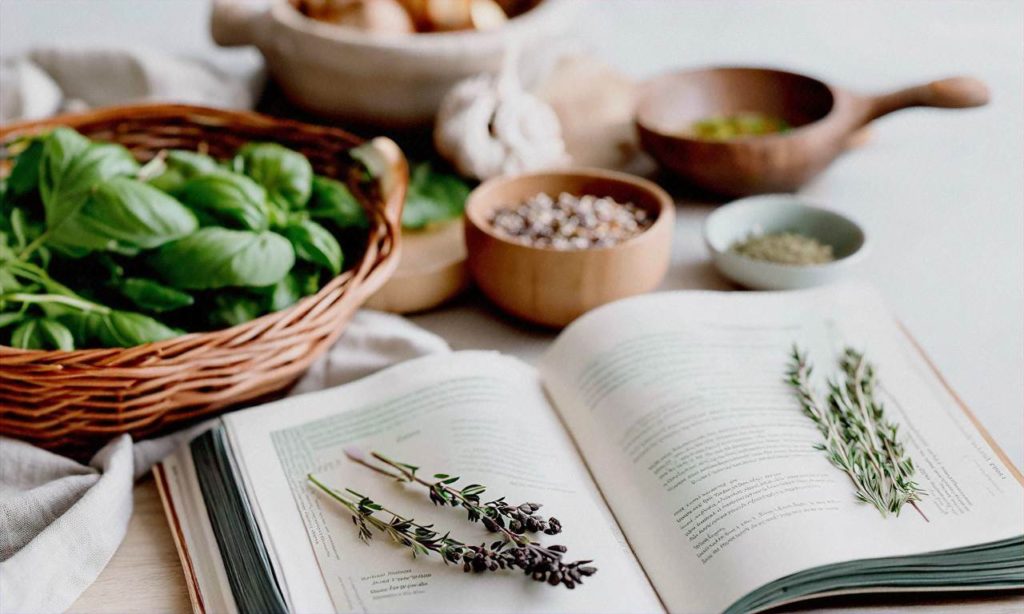
Italian and Greek dishes wouldn’t be the same without the woodsy, aromatic flavor of oregano. Redolent of the Mediterranean hillsides where it grows wild, oregano tastes like warmth and comfort. It brings out the best in tomato sauces, cheeses, olive oil, roasted vegetables, and meat. This hearty herb can handle the long cooking times of braises, stews, soups and baked casseroles. Use it dried or fresh in favorite winter comfort foods. Sprinkle liberally over pizza, pasta, egg dishes, meat loaf, pot roasts, or lamb. It infuses food with the essence of home and hearth.
Sage Advice

No other herb evokes the nostalgia of grandmother’s kitchen like sage. Its soft, velvety leaves and faintly piney, camphor scent remain the defining flavor of Thanksgiving stuffing for good reason. Sage brings out the natural richness of poultry, pork, cheese, and vegetables like squash, potatoes, carrots, and onions. Chopped fresh or crumbled dried sage leaves enhance the flavor of hearty casseroles, roasted meats and veggies, pan sauces, salad dressings, biscuits, breads, and more. Steep sage leaves in cream or butter to infuse that flavor into risotto, pasta, mashed potatoes, or compound butters. Sage remains a steadfast herb for warming winter fare.
Get Cozy with Herbs
As part of our “Savor the Seasons: Fresh Herb Recipes for Spring, Summer, Fall and Winter” series, we hope you’ll experiment with cooking with herbs to warm up from within this winter. Hearty oregano, savory, sage, thyme, rosemary and bay leaves help chase the chill away. Use their robust, spice flavors to infuse richness into braises, soups, roasted dishes, and comfort foods. With practice, you’ll learn how to balance and combine herbs’ potent qualities into delicious creations perfect for the colder months. So get cozy, and spice up your winter meals from the inside out!

